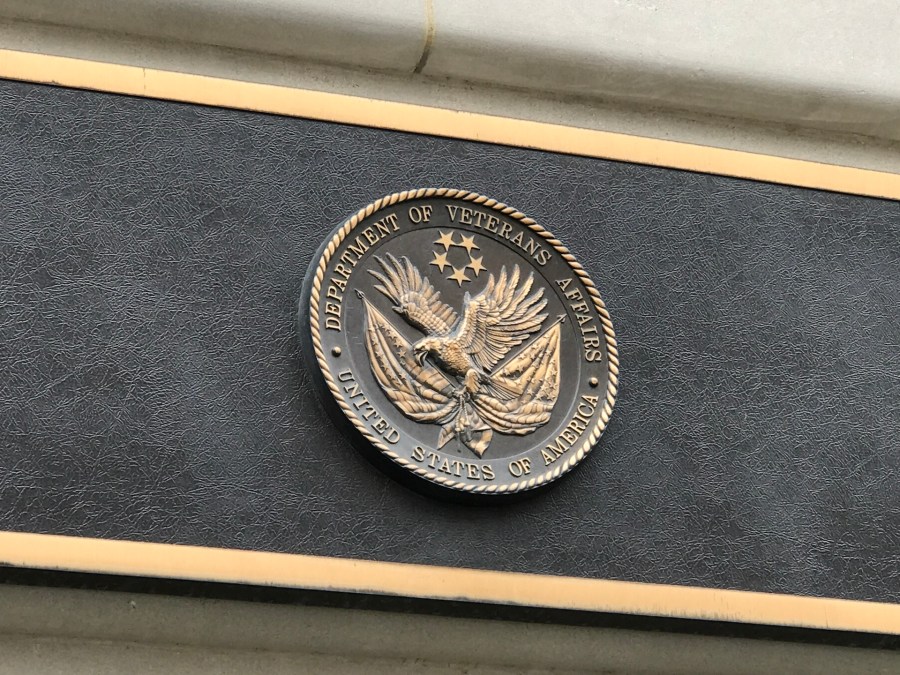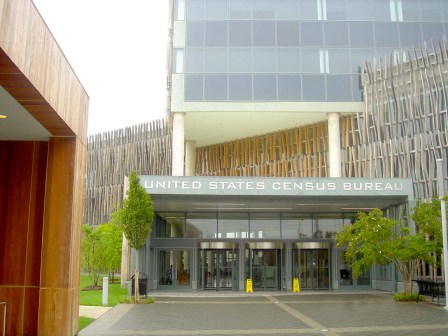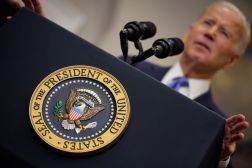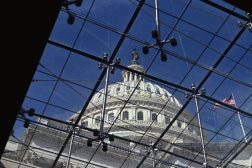Looking for ‘balance,’ U.S. Digital Service team adapts to changes at VA

Until 2019, the U.S. Digital Service members at the Department of Veterans Affairs operated under their own leadership as a satellite agency team. Over the past six months, however, they have been absorbed into the VA’s Office of the CTO after their charter expired.
The change marks an evolution for one of USDS’s oldest agency teams, the organization’s leadership says. But the shift also took place under the shadow of conflict between VA leadership and the consultative technology unit, which is formally housed within the Executive Office of the President.
Then tension started with a report written by USDS in early 2019 that criticized the VA’s handling of the rollout of the 2018 MISSION Act, drawing public ire from the department’s secretary. Shortly after, leaders of the digital service team left the agency and the remaining team members were subsumed into the Office of the CTO, which reports to the VA’s CIO.
Is this the story of a fraught partnership between two very different organizations, or a story about the successful adoption of digital service principles in an agency-native way? Could it be both? What on the surface may appear like a demotion, could, in fact, be what assures the team’s long-term sustainability.
Whatever the case, the VA team’s situation shows a potential path forward for scaling digital services in government, and it serves as an example for how the USDS concept — deploying highly skilled, tech-focused teams to work inside agencies — is changing in an era when politically appointed leaders are more apt to elevate and consult with their IT experts.
A ‘natural progression’
There wasn’t a single moment or snap decision that led to the reorganization, Charles Worthington, CTO at the VA, told FedScoop.
Rather, moving the USDS team, known as DSVA, from its previous seat in the Office of Information and Technology’s Enterprise Project Management Office over to the Office of the CTO happened over time. The new structure, he said, shows VA’s “appetite” for human-centered design, agile development and other elements of the USDS way of operating.
“For whatever reason, I think we’re at a point at VA where we’re ready to really scale this stuff,” Worthington said. “It’s really been about how can we do this for real, across an entire IT organization, not just in little bits and pieces where we’re able to get a specialized team in. We’re still learning how do we best do that … but we’ve seen really promising results.”
The U.S. Digital Service has been working with the VA since late 2014, helping to modernize the online systems that veterans use to interact with the agency and receive benefits.
In November 2015 the group launched a beta version of the user-centered web portal Vets.gov, which was expanded and ultimately migrated to the VA’s primary web domain (VA.gov) in November 2018. Vets.gov was lauded by the community — in October 2018 DSVA executive director Marcy Jacobs and her team won a Partnership for Public Service Samuel J. Heyman Service to America Medal award for the work.
Other USDS projects with VA include an improved Appeals Status tool — which shows veteran users exactly where they are in the appeals process, what needs to be done next and how long they can expect it to take — a Disability Compensation Claim Tool and more.
There has been a certain kinship between DSVA and the CTO’s office for some time. In July 2013, former Presidential Innovation Fellow Marina Martin was named VA CTO and went on to found the USDS presence within the agency.
Worthington is cut from a similar cloth — he was a PIF in the class of 2013 and went on to work in the White House and as acting deputy administrator of USDS before being named VA CTO in 2017. Worthington’s position is more technical than his VA CTO predecessors, though. His office sits in the Office of Information and Technology and he reports to the CIO.
For Worthington, the “alignment” between the Office of the CTO and DSVA makes the partnership a no-brainer. It became “pretty clear that the right move was to move the Digital Service team and align it under the Office of the CTO because the two organizations had pretty similar things we were working on, goals, technical skills,” he said.
Eddie Hartwig, deputy administrator at USDS, sees the transition as a “natural progression” as digital service concepts and talent spread across government.
“The environment has changed,” he said. “We’re in a world in which we are now… five-and-a-half years old, and we have four-year terms and some people stayed four years and then decided that this experience was the career that they wanted.” People like Worthington, and Clare Martorana who worked at USDS before taking the role of CIO at the Office of Personnel Management, open up “a whole new way of working,” he said.
“It’s not a firefighting model and it’s not a teaching-human-centered-design model — it’s a collaborative partner model,” Hartwig said.
That said, there has been a marked change in the way the U.S. Digital Service does business with the VA. The group’s charter with the VA expired in early 2019, and director Marcy Jacobs and her deputy David Bao left the agency in October 2019.
Still, work on DSVA’s projects continues and the status of the agency’s relationship with USDS is “basically stable,” Worthington told FedScoop. He and his team are creating a new Digital Experience and Product Office within the Office of the CTO, which will manage veteran-facing digital products like VA.gov and others. U.S. Digital Service employees are helping to get this office off the ground.
“The difference is now … it’s not just Digital Service people that are on the VA.gov project,” Worthington said. “It’s also people coming in through other pathways. But VA continues to have a close relationship with the Digital Service.”
Hartwig says the expiration and non-renewal of DSVA’s charter isn’t a big deal — it’s just another indication of the changing environment. “Charters were more important in the early days of USDS than they currently are,” he said. “Back then, agencies were wondering what a Digital Service was. Now that we are better known, we focus on how we can best get great work done together with agencies.”
And where the team can best get great work done now, he says, is in the Office of the CTO.

Charles Worthington speaks at FedScoop’s IT Modernization Summit on a panel about the Technology Modernization Fund. (FedScoop)
The MISSION Act sprint report
While the transition of the DSVA team to the Office of the CTO may not have a singular cause, the timing did coincide with increased tension between VA leadership and the digital service group.
A USDS discovery sprint report, which ProPublica obtained and published in May 2019, warned of flaws in a tool being developed in order to implement the expansion of veteran access to private healthcare as required by the 2018 MISSION Act.
“Given the high level of risk surrounding the timeline, planned engineering implementation and usability concerns, USDS anticipates that [the Decision Support Tool], if released into production, will negatively disrupt the physicians workflow and reduce daily appointment capacity within [the Veterans Health Administration],” the report stated, before going on to recommend that VA stop work on this version of the tool and “redirect development efforts towards a reimagined DST that serves both VA Clinical Staff and Veterans.”
VA Secretary Robert Wilkie publicly denounced the report’s findings. “I will refute everything in that report,” he said in an interview with Colorado Public Radio. He also took a shot at USDS’s competencies: “For an outfit that’s supposed to be all about technology, about 90 percent of that report was about policy, which I think if you look at their charter, they were not competent to do,” he said.
For his part, Hartwig told FedScoop that the idea of moving DSVA to the Office of the CTO predates the publication of the sprint report — but he didn’t deny that it placed a strain on the relationship.
“It made us re-examine our relationship with the VA,” Hartwig said. “That report was never intended to be public, and because of that it was intended to be direct and honest with the VA.”
The report represents just “one moment” in a long and successful partnership with the VA, he said. “The reality of it is that we stuck it out with the VA, we continue to support the programs there.”
Above and beyond the specific, however, the trajectory of the Digital Service team at the VA reflects a broader change in the country’s political environment.
“In order to effectively solve a problem — any problem — you need leaders that prioritize results and facts, even when they are inconvenient and uncomfortable,” Emily Tavoulareas, who worked with DSVA from January 2015 to January 2018, told FedScoop of the VA’s top-most leadership. “The last administration had leaders like that. In the transition we, like all public servants, found ourselves in a fundamentally different environment: one which relentlessly pursued headlines, and dismissed [or penalized] facts and truths that did not align with political needs and rhetoric.”
Find the truth, tell the truth
One of the U.S. Digital Service’s six stated values is “find the truth, tell the truth.” The independence that USDS enjoys as part of the Executive Office of the President in the White House is valuable for this end. And the perspective that USDS employees bring to an agency — that of technologists rather than policy or government bureaucracy experts — is valuable too.
But these perspectives and cultural differences sometimes place USDS at odds with its agency partners.
“Does it ever ruffle feathers? The clear answer to that is yeah,” Hartwig said. But he added that as USDS’s relationships with agencies mature, it gets easier to tell the truth without upsetting anyone.
There’s also the issue of where a Digital Service team sits in the organizational structure of an agency. At the VA, the USDS lead has traditionally had a close relationship with the agency’s deputy secretary, and this privilege sometimes led to resentment multiple sources told FedScoop. (Hartwig characterized the relationship as a “dotted line.”) Typically, the USDS teams at agencies report to top leadership, like a secretary or deputy secretary, often circumventing the CIO. It was a concern the Government Accountability Office raised in a 2016 report on measuring the success of the digital services team.
“I think there’s always this dynamic of, you know, coming in from the outside in a prominent role or sort of a more senior role, you’ve got to figure out how can you be most effective,” Worthington said. While this isn’t unique to USDS, he said, it does present a challenge to navigate.
Hartwig told FedScoop that USDS likes to sit at a high level at agencies because it allows the team to look holistically across the enterprise. But finding the right organizational structure is about “balance,” he said. “This is what we have always struggled with … how do we get things done, how do we get things done quickly and how do we do it in a way that is permanent and is acceptable and adopted by the agencies that we work with.”
“We have made mistakes,” he went on. “We have pushed too hard in some agencies. We have moved to fast. We have built things that the agency does not accept.”
And ruffling some feathers at the top doesn’t necessarily spell an end for the USDS regardless of what agency it is. It’s in the organization’s blood, after all, to go where the work is.
“In a very real way, the USDS people that remain at VA are staying true to another USDS value: going where the work is,” said Tavoulareas. “At the end of the day, veterans still need help, and VA services still need improvement. If the secretary layer is too toxic for the work to happen, then it goes elsewhere.”
Moving the USDS team at the VA into the CTO’s office means aligning the team with VA’s traditional IT infrastructure in a new way. The team could gain a new kind of legitimacy, but it may lose elements of the high-level cover it had before, too.
“I do think that standing up a permanent part of IT that is in charge of the running of the digital experience products, to sit alongside the other product offices … I do think that that will be a way to more effectively integrate with the main body of IT folks,” Worthington said.
“This is an experiment for us,” Hartwig said. “This seems to be the formula that’s working. VA has adopted these principles, they’ve adopted these methodologies, they are now hiring directly into their ranks designers and product managers and engineers and we fully support that. So we’re going to stick there, we’re going to use our pipeline to make sure Charles has great people and then as that builds up we will go back to product-facing work and work with Charles on that or we will remain, as we are for every agency, available in case there is an emergency.”




